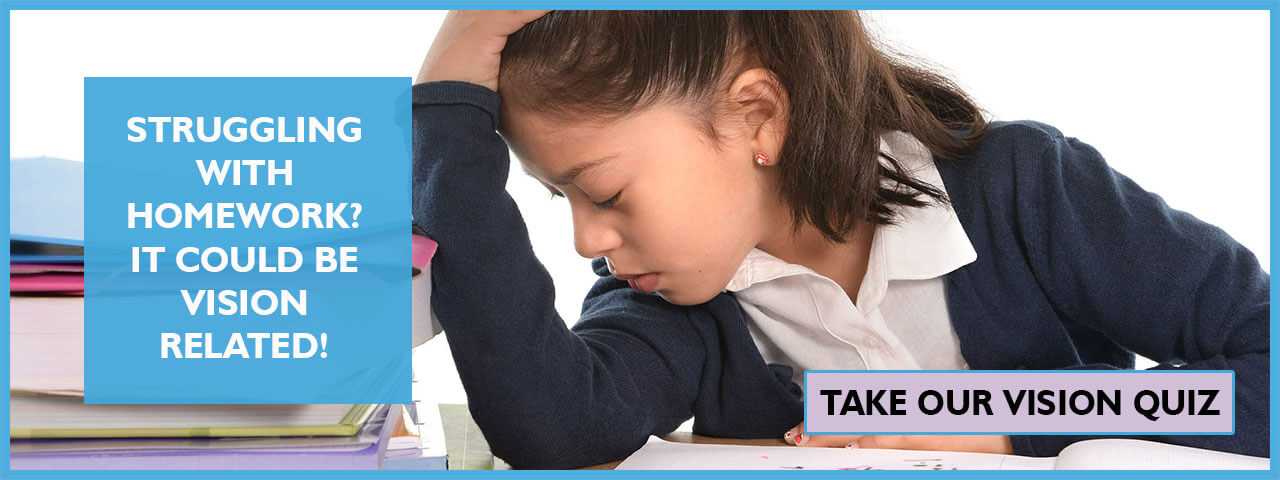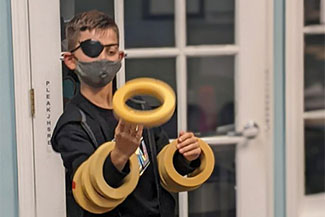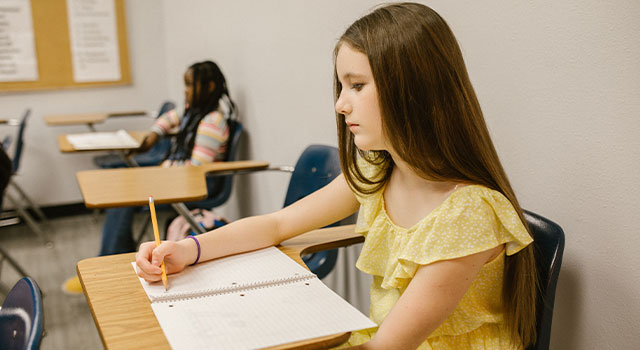Vision Therapy — Developmental Optometry
Vision isn’t just about seeing well — it’s about how we interpret and interact with the world visually. Over 25% of school-aged children have visual issues that affect learning
Effective vision comes down to the way the brain and eyes interact. Whether reading words on the board, catching a ball, or tying our shoelaces, we rely on our visual system to work properly in order to succeed in these and other tasks.
Someone can pass all vision screening exams and excel in reading the charts on the wall, but still struggle with poor hand-eye coordination, reading problems, diminished focus, strabismus, convergence insufficiency, and amblyopia —all of which can be effectively addressed through vision therapy.
What Vision Therapy Can Help With:
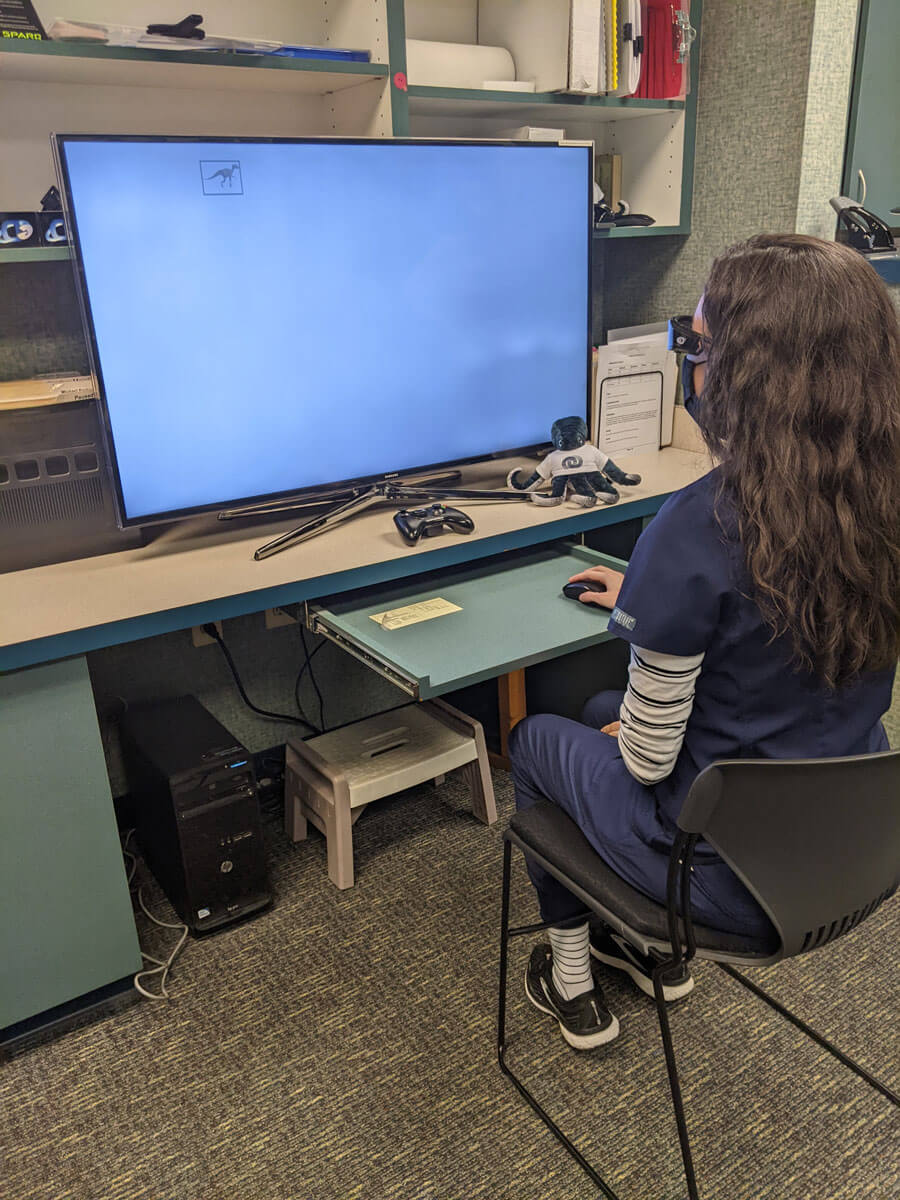
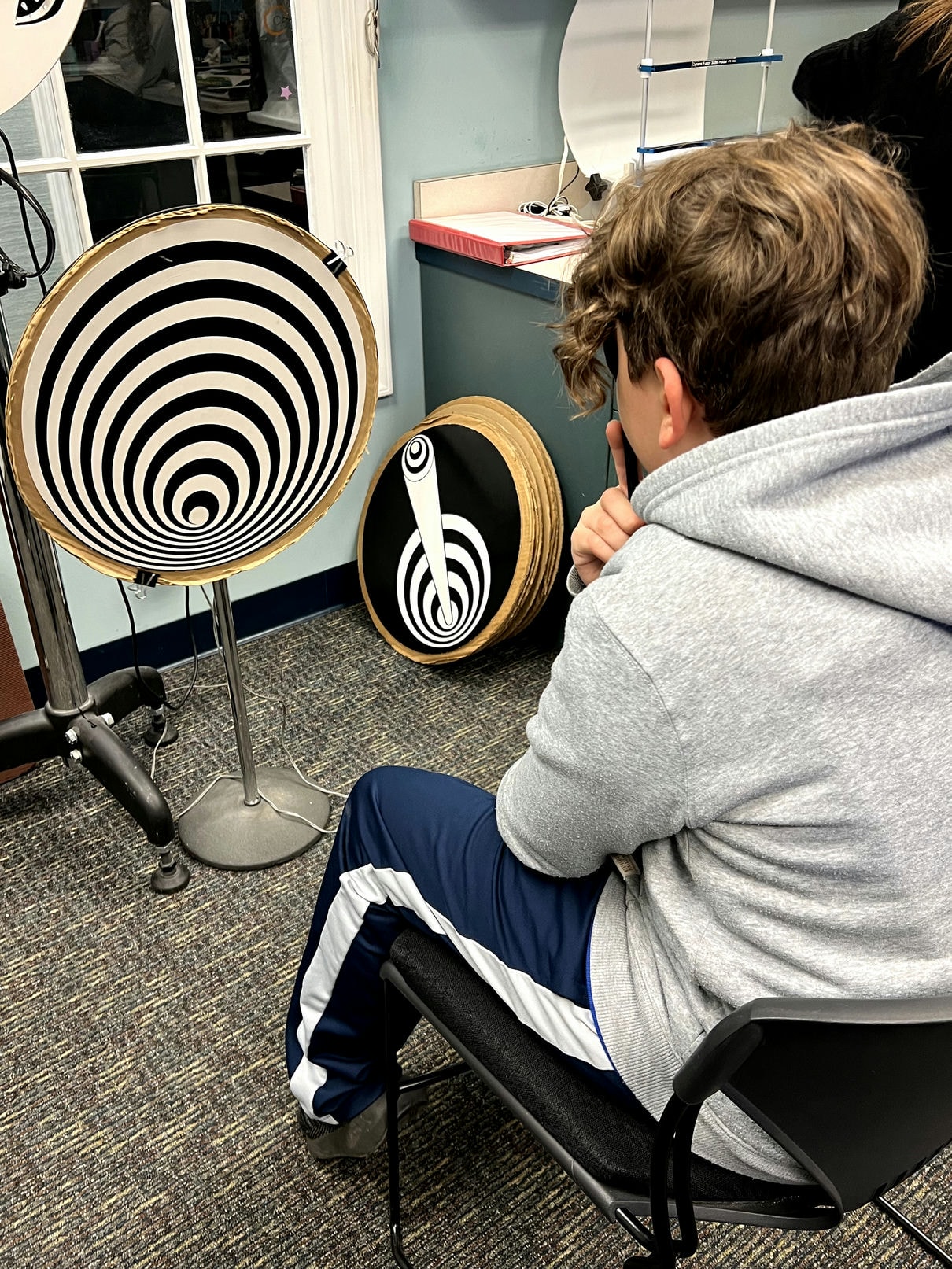
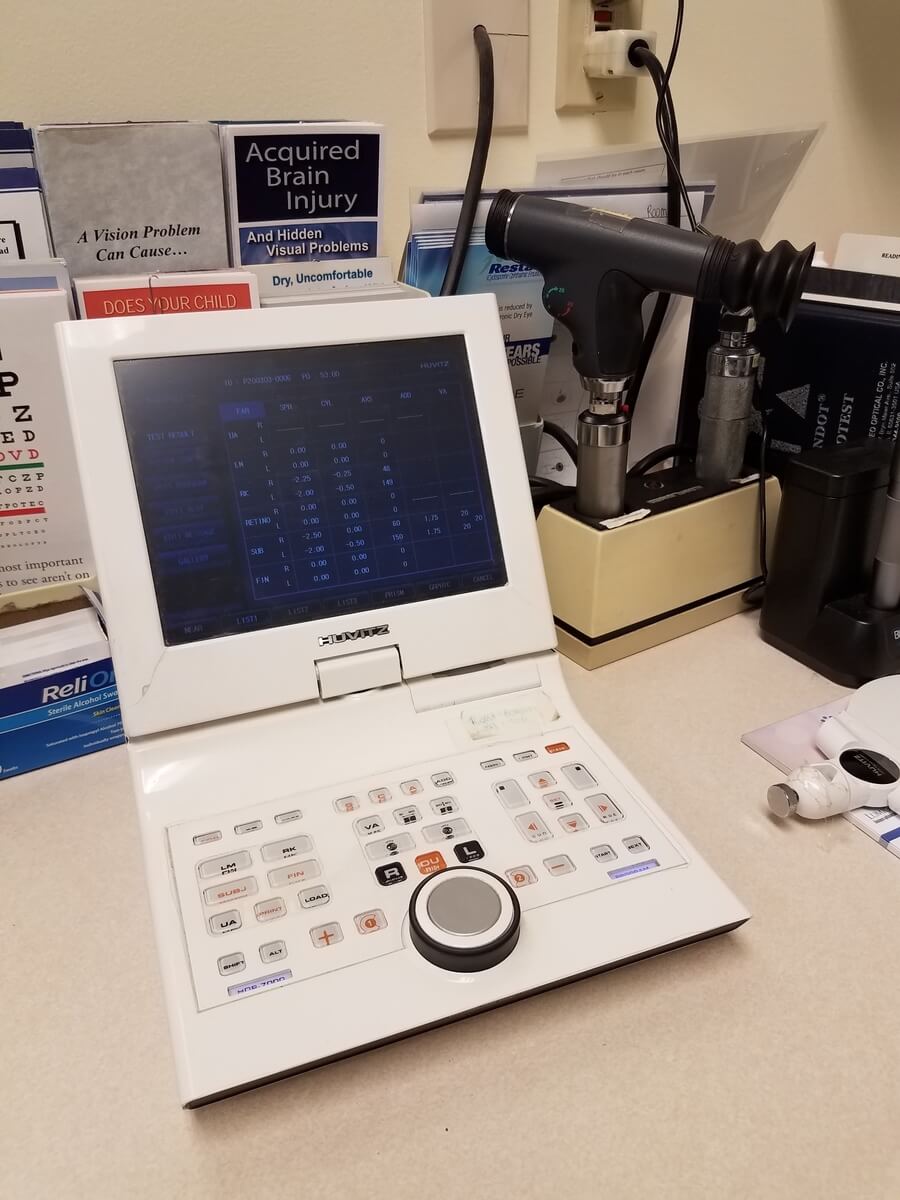

Vision Therapy Success Story – Letter From a Happy Patient
A patient expresses deep gratitude to Dr. Roth for his vision therapy, acknowledging the improvements in their ability to read and perform daily activities. They credit Dr. Roth with giving them hope for the future and emphasize the life-changing impact of his care.
Dr. Roth received the letter from the mother of a child patient. The child wrote the letter on their own, printed it, and sent it, without being asked by the mother.
The child recently read a 259-page novel in two days, despite being a non-reader before starting vision therapy just a few weeks ago.
Vision therapy success can vary—sometimes it happens quickly, and other times it takes longer.

Vision Therapy and Vision Correction
The most common reason someone becomes nearsightedness is due to difficulty in physically focusing or difficulty in using the 2 eyes together as a team (binocularity).
Accommodation is the ability to physically focus the lens in the eye when we look at reading material or at a computer. When we look at a distance, for example, a child looking at the board in school, we must relax and change the focus of the lens in the eye. When someone has difficulty with the accommodation system, it often leads to someone becoming nearsighted.
When we read, we must point our eyes IN (converge), and when we look at a distance, such as the board in school, we must point our eyes OUT (diverge). When someone has difficulty converging and diverging, that too often leads to someone becoming nearsighted.
Children commonly spend a considerable amount of time indoors, using computers, smartphones, or video games. If the visual system does not function well when focusing (accommodation) or fusing (binocular vision), that can then cause a child to become nearsighted.
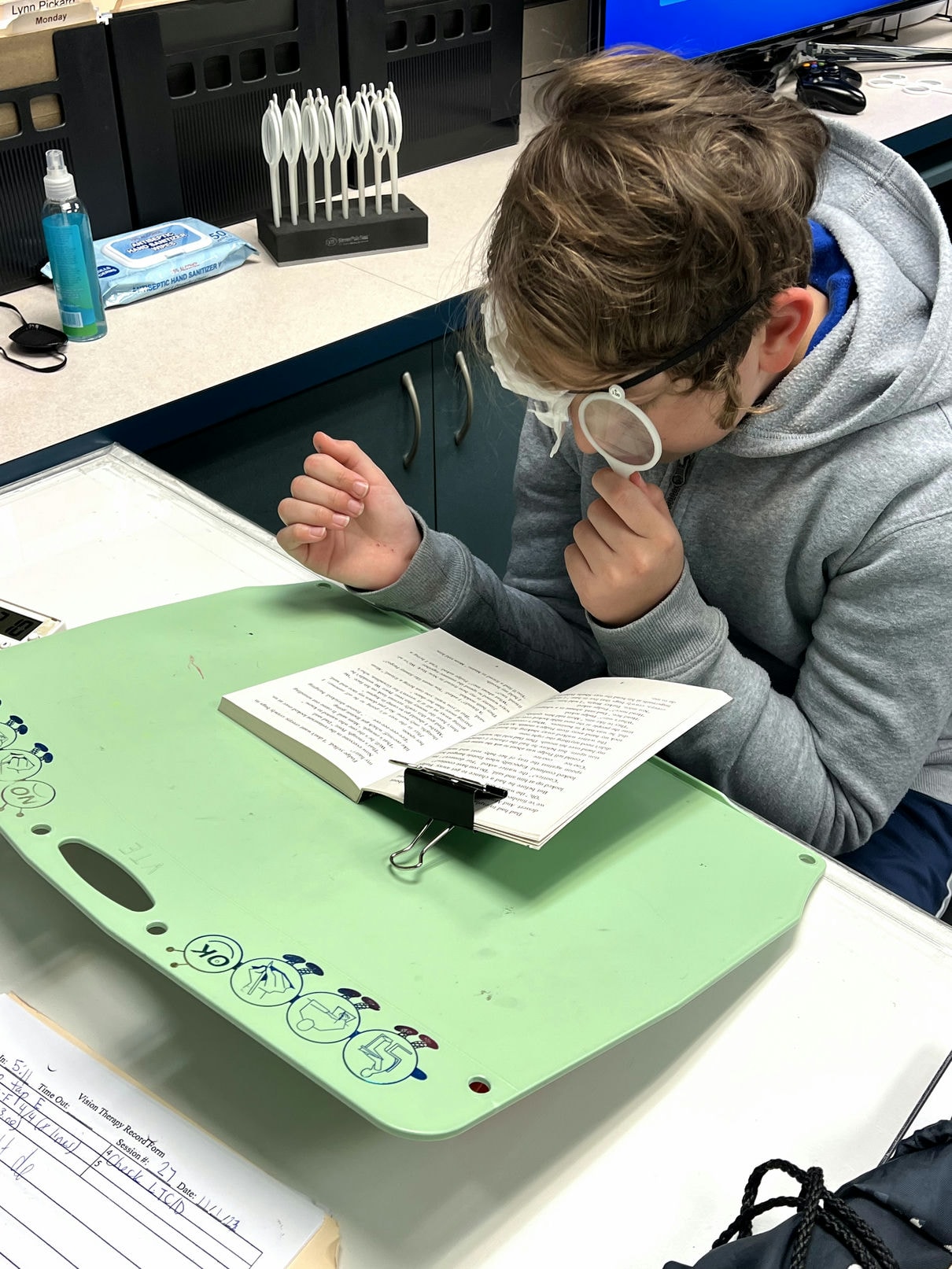
Vision Therapy is Brain-Based Therapy
Vision Therapy enables a child to develop the visual skills needed to be able to focus and defocus, and to be able to use the 2 eyes in a coordinated manner. Vision Therapy is brain-based therapy. It is the brain that tells the eyes how and where to focus.
In addition to addressing vision improvement and improving the needed visual skills for schoolwork and everyday life, Vision Therapy is also implemented in other conditions:
- Someone who has an eye that may turn (strabismus) or amblyopia (lazy eye).
- Someone who has learning disabilities or reading problems
- Someone who has attention deficit disorder (ADD)
Vision Therapy is a supervised treatment program designed to correct visual-motor (eye-based) and/or perceptual-cognitive (brain-based) deficiencies. Vision Therapy helps children and adults who have not developed the visual skills that are needed for effective reading, writing, and learning. These skills include:
- Eye movement and focusing skills
- Convergence
- Eye-hand activity
- Visual memory skills
- Other neuro-visual functions.
Vision Therapy helps people build the ability to coordinate the two eyes (binocular vision) in the way a coach might help his team members coordinate. When the two eyes don’t work together as an effective team, then performance suffers. The affects reading, sports, eye contact, etc. Vision Therapy helps children and adults that have problems in using their visual system efficiently. At times children or adults have not yet learned or acquired the visual skills necessary. These are problems in Visual Development. At times, an individual may have had the skills, but lost them due to brain injury from trauma, stroke, lack of oxygen, etc.
Vision Therapy is based on the established principle that vision can be developed and changed. For example, our eye doctors in Old Bridge, NJ know that infants are not born with fully developed visual abilities and that good vision is developed through a learned process for children and adults alike.
Learning Disabilities, ADHD/ADD & Vision
Vision issues can cause significant behavioral and learning challenges for children. Often, these challenges manifest in ways that are often confused with
- Dyslexia,
- ADD or ADHD
- Reading problems, and
- Poor focus.
If you can’t make sense of what you’re seeing, sitting in school is pure torture. Vision problems are a barrier to focus and therefore result in poor behavior and school performance.
Very often, a diagnosis of ADD or ADHD is compounded by underlying vision problems. Sometimes, the diagnosis itself is in error and the behaviors and learning challenges are solely due to these visual conditions.
By addressing the underlying cognitive visual problems, Vision Therapy helps address the underlying causes of hyperactivity and concentration problems.
The result is improved behavior, focus, and life achievement. A meta study based on data of 75,000 children shows that children with visual problems that cannot be corrected by glasses or contact lenses, have double the rate of ADHD.
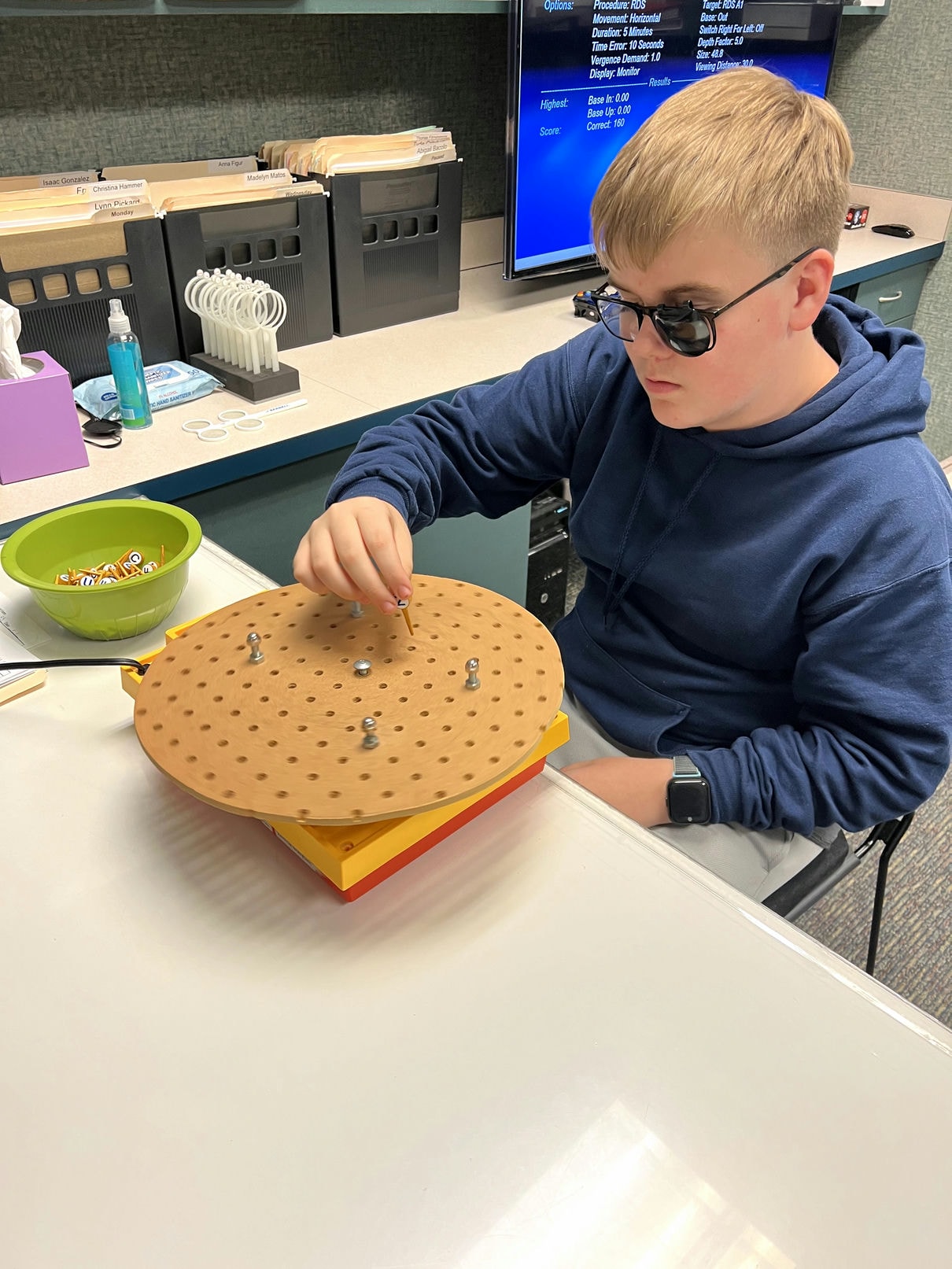
Vision's Role in Learning
Learning is highly visual. When vision conditions disrupt the way we perceive and interpret information, a child’s learning is compromised.
Perceptual challenges in vision such as dyslexia, amblyopia, and convergence insufficiency can be effectively addressed through Vision Therapy. The regimen of technologically aided activities of work to significantly improve the accuracy and skill with which a child perceives and interprets visual information.
As a result of Vision Therapy, your child’s vision problems are addressed, learning becomes much easier. This means improved ability to focus, learn, and excel, socially as well as academically.
Special Needs & Vision
Special needs such as autism, cerebral palsy, down syndrome, and other conditions often mean a child struggles with hand-eye coordination.
Children with these challenges, or anything else requiring occupational therapy, is very likely to gain immensely from Vision Therapy. A regimen of customized focus and perception exercises will improve depth perception and fine motor skills.
- 45% of patients with down syndrome have strabismus/cross eye
- As many as 40% of autistic people have strabismus/cross eye
- Estimates of the incidence of strabismus in children with cerebral palsy go as high as 88%, Vision Therapy has shown to be effective for children with cerebral palsy.
Convergence Insufficiency
This near-vision problem is the leading cause of eyestrain, blurry vision, and double vision. Research demonstrates that the traditional focus exercise often called “pencil pushups” are ineffective. The only consistently effective treatment for convergence insufficiency is office based Vision Therapy.
A study of almost 700 5th and 6th graders indicated that convergence insufficiency is much more common than many assumed with 13% of students having CI, as well as demonstrating that of the children who showed three signs of CI, 79% where classified as being accommodative insufficient as well.
Amblyopia
Amblyopia (also called lazy eye) is a condition defined by the loss or lack of development in an eye unrelated to any eye health problem. Strabismus is a condition defined by eyes that do not align. Both of these conditions are adaptations to a visual system that is unable to coordinate the vision from both eyes.
In 1740, a French naturalist named Marquis de Buffon discovered if he patched the fixing eye in a person with unilateral strabismus that the acuity in the amblyopic eye would improve.
Contemporary research has found patching to be only partially effective. Furthermore, wearing a patch can be even more socially alienating for a child than the eye condition itself.
Unlike patching, Vision Therapy incorporating techniques such as Monocular Fixation in a Binocular Field and technology such as Vivid Vision Virtual Reality has consistently found to be an effective treatment for strabismus and amblyopia, resulting in sustained and significant improvement.
Vision Therapy For Adults
Vision Therapy is not only for children. Adults have as much need and can benefit from Vision Therapy as well. At times, a problem first manifested in childhood, but was never addressed. At times, the problem reaches a critical point in adulthood and becomes more debilitating.
Vision Therapy is often more effective for adults because they are usually more motivated to improve their visual abilities, whereas children may not understand that they have a problem or how that problem may affect their interests or future.
Many people have visual problems sustaining near-centered work, including reading, writing, and computer use. When people have trouble using both eyes together or can’t focus for great lengths of time, they do not simply grow out of these problems. Children with visual problems often become adults with visual problems.
Vision Problems Can Affect Your Life
Adults will figure out many ways to compensate for their visual problems so that they can continue with any strenuous visual work they need to do. This leads to their coming home from work extremely tired although all they did was sit at a desk and do paperwork.
Children, on the other hand, will just tend to avoid tasks that are difficult or make them feel inadequate. The proper lenses along with vision therapy make a tremendous difference in an adult’s ability to function at work or sports, just as with children of school age.
The following is a video by Susan Barry, PhD about her experience with Adult Vision Therapy:
This video is more comprehensive and goes into a lot more detail about the visual process:
Here is another great video which explains what 3D movies can tell you about your vision:
Learning Disability & Vision: What Does Research Say?
The Connection Between Learning Disabilities and Vision
60% of learning disabled students failed two or more binocular vision tests according to research by the Waterloo School of Optometry. The study was performed on students who had never received an eye exam and did not wear glasses or contacts. The research confirmed that children with learning disabilities, especially reading related learning disabilities have an extremely strong chance of having binocular issues (problems with the eye working together).
How Many Students Have Binocular Vision Problems?
According to research performed by The AAO 32% of university students had Binocular Vision Issues. The conclusion of this study is:
“Because these dysfunctions have a negative effect on performance, appropriate vision evaluation for this population is extremely important. In this study 31% of the students needed Vision Therapy for symptoms such as eye strain, double vision and headaches.
Vision Therapy: Reading & Dyslexia
Reading is the perfect example of a complex visual task that requires skills such as eye tracking and focusing (accommodation), eye teaming and coordination (Binocularity).
According to Dr. Debra Walhof M.D, member of the National Center for Learning Disabilities. “It is important to remember that normal sight may not necessarily be synonymous with normal vision…” Learn more about reading and vision therapy.
Meet Our Developmental Optometrists










